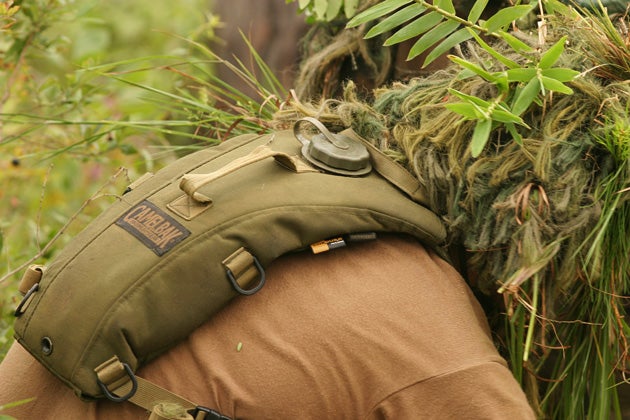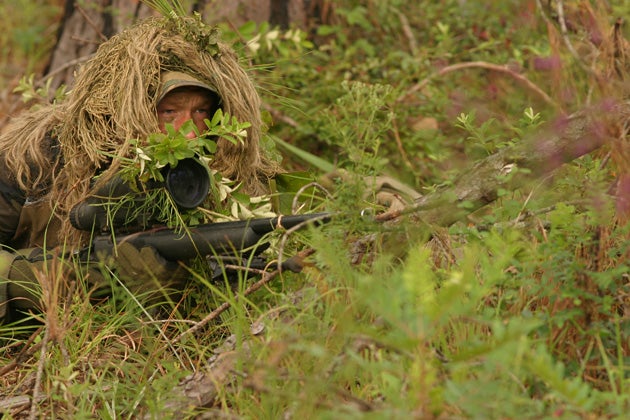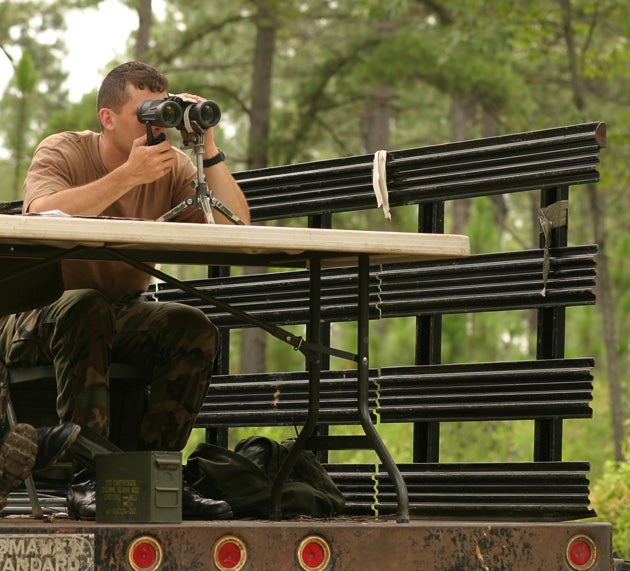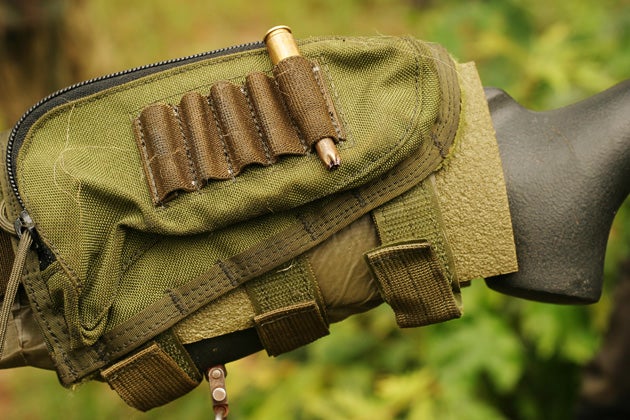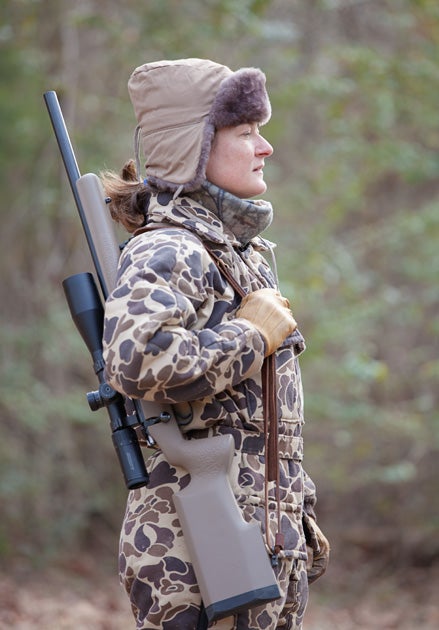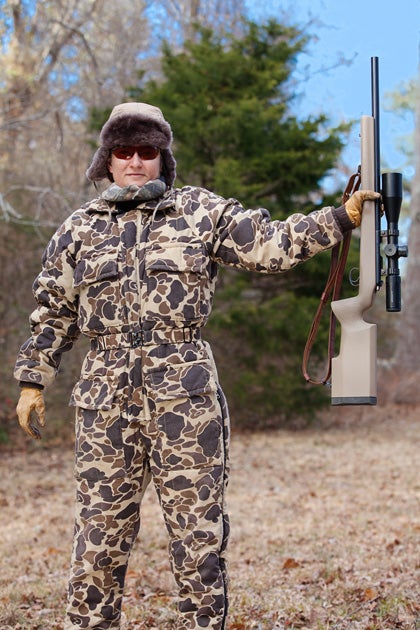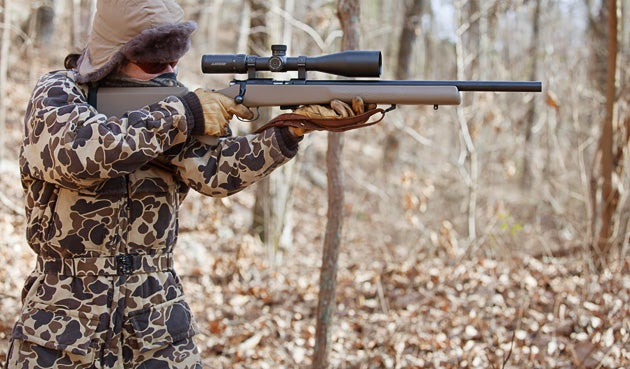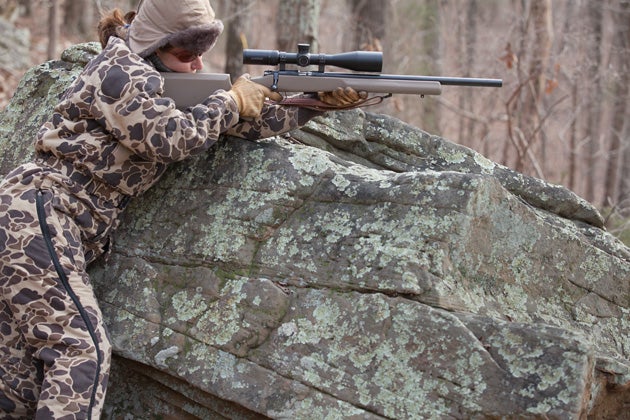Pointers on Learning Snipercraft
Oleg Volk 01.28.14
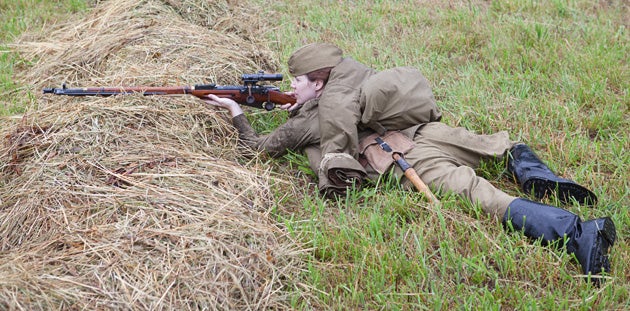
So you want to learn sniping for its utility in a survival situation. Very good. A competent rifleman is quite a force, especially since we the people generally lack heavier arms than rifles these days. Third-world tribesmen have heavier weapons, but not free Americans, no Sir! So sniping it is. That worked well for the Boers…until the British went into a full-contact fight.
The first question is, “What kind of sniping?” Police sniping doesn’t seem very relevant. It’s usually done at ranges under 60 yards for the purpose of instantly stopping hostage takers. Legitimate police sniping, that is. There’s also the Lon Horiuchi variety that follows slightly looser rules of engagement. Hunters are snipers of a kind as well. The term itself comes from wingshooting particularly fast birds. But the hunting variety isn’t quite right either, as most game animals don’t shoot back. That leaves us with military sniping, the kind where the practitioner stays well away from the opponents and settles for delivering a debilitating hit without worrying about instant incapacitation. An enemy soldier or enforcer with a wide hole through the torso is out of the fight even if he eventually recovers to draw a disability pension back in the Fatherland.
Water is heavy but necessary. Learn how to function in the woods and how to trek through an urban terrain without attracting unwanted attention. A couple of water bottles in a messenger bag may be less obvious than a Camelbak.
Firing on a foe usually requires being within line of sight. That means you have to trek a good distance without breaking a leg, starving, or dying of exposure. Lesson one of sniping does not involve guns, but plenty of fieldcraft. Fill that water bladder, lace up the shoes, and learn to walk without making too much noise or falling over in the dark. While you’re at it, have a couple of friends go through the same area from other directions and compete for being the first to spot the others. This will take time, patience and endurance — not glamorous but very useful.
Camouflage is important. Since camo outfits stand out in most social settings, farmer’s coveralls are often less noticeable than Muilticam. And conversely, in the woods, good quality camo fabric that doesn’t glow on night vision scopes can be a lifesaver.
Unlike deer, human foes usually shoot back. Those who don’t may be too busy calling artillery, air strikes, or heliborne pursuers onto your location, observed or suspected. Fort Benning Army base sniper trainers used binocular to spot low-crawling snipers. A properly hidden trainee could fire two blanks while in the field of view of the instructor and still not get localized!
In sniper school, the soldiers knew they were being watched. Would you notice a human observer, a game camera, or a CCTV without being prompted?
Let’s talk about marksmanship. First-shot hits are obviously a must, as your targets will move behind cover fast if you miss. They will also do their best to shoot you back, and belt-fed weapons have a way of getting hits even with untalented operators behind them. What factors make up your accuracy? Your own skill at holding the rifle is number one. Go to Appleseed, learn how to shoot accurately at 25 yards. Your rifle and ammunition are next. A bad rifle with good ammo or a good rifle with bad (or even just mis-matched) ammunition is equally bad. Don’t shoot heavy subsonic match bullets from a slow twist barrel meant for light ball. Don’t expect milsurp of unknown provenance to perform consistently from batch to batch.
Army snipers sometimes use blanks when training in close proximity to their downrange instructors. Dry firing (with safe directions still considered) is a better option for the rest of us.
A sniper should know how his rifle shoots. That means zeroing at a known distance and then checking the drop indicated by the ballistic calculator at other known distances. Make sure that the actual drop at 500 matches the expected amount. If it does not, make a note of it. Doing that requires access to the range that goes out to the effective limit of your rifle and cartridge combination, usually about 800 yards.
Mechanical accuracy is the easiest to establish. A proper precision rifle will run sub-MOA groups with ease and will shoot almost to the same point of aim on the cold bore as the subsequent shots. Call it 1MOA for simplicity. At 600 yards, the group would be be less than the width of a sheet of typing paper, and drop is known from the charts and the test firing. But actually hitting the target requires centering that tight group on the foe, and that’s where the difficulty is. Drop depends on the ambient temperature, air pressure, and humidity. Firing over a hot asphalt runway or a cool river surface would change the drop. Wind can drift the projectile a foot or two sideways. Your enemy could decide to move while you take aim. Long-distance marksmanship is more about reading the environment than it is about buying the best rifle and cartidges.
CZ455 Varmint Precision Trainer looks and feels like a full-size sniper rifle. It’s actually chambered in .22LR.
Developing these skills takes time and ammunition. It takes about a thousand rounds of match ammunition to gain proficiency with a sniper rifle, and that adds up to about $2,000 at current prices, a relative bargain compared to the cost of the time required. To make the best use of that investment, basic marksmanship proficiency has to be reached first. Rimfire trainers are an excellent way to get there. .22LR match ammunition costs about 30 cents per round vs. $2 for 308 match. It gets more affected by wind and other factors, so that the same learning can take place at less than half the distance.
Same weight, same bulk as the centerfire gun.
The weight and the bulk of the .22LR trainer, clearly excessive for the caliber, serve a useful role. Since a great part of the training consists of moving with the weapon, handling it under sub-optimal conditions, and firing from improvised supports, duplicating the form factor is important. Developing the familiarity is the reason why I would suggest scoping the .22LR with a centerfire optic like the 6-24x scope shown. Once 200 yard competency has been established, pushing 300-400 yard range would test the ability to interpret the environmental factors with less margin for error than 308 would have provided. Faster and less susceptible to wind drift, the centerfire round would mask range and wind estimation errors while .22LR would show them vividly. Using a small target on a large backstop would show actual impacts clearly and let the shooter learn from the mistakes.
Off-hand shooting from a recoil-taming stance. While the .22LR Trainer has no perceptible recoil, it should still be handled as if it does.
Far too many new shooters try to buy more mechanical accuracy than they need. Heavy barrels confer some advantages but also add weight and bulk. Shoot your rifle off-hand and from natural supports. This way, the suitability of the form factor can be tested. Keep in mind also that the position shown below is steady but not practical of adversarial situations. A sniper concerned about return fire would have peeked around the rock rather than above it. If more elevation was required, he would have moved further up the rockface and hid in the shadowy crevice instead…though that assumes avoiding visual rather than thermal detection.
A steady perch for the hunter, a dangerously exposed spot for a sniper.
The next phase of sniper training centers around communication with the spotter. Civilian snipers rarely act as forward observers for serious firepower, but they are still more likely to be recon than a strike force. And a sniper backed by a spotter is far more likely to survive his mission than even a talented loner.
